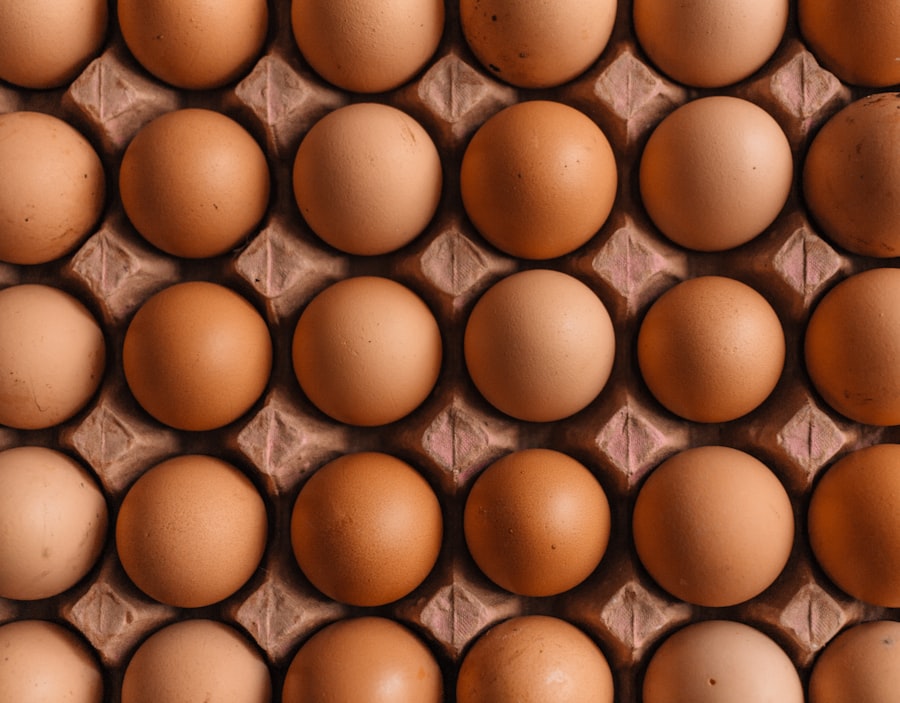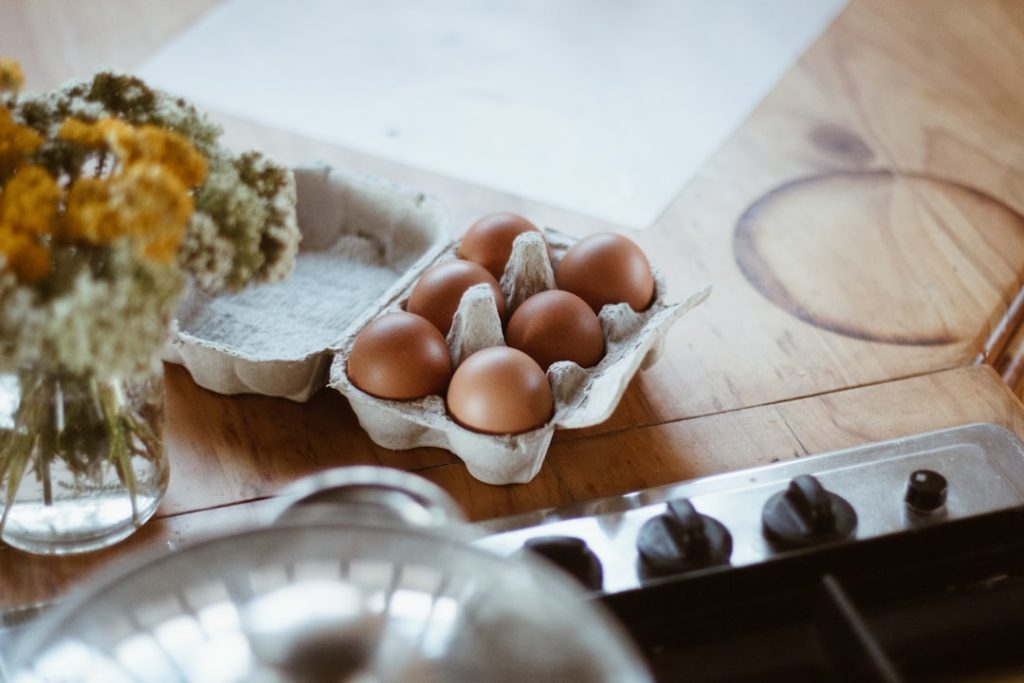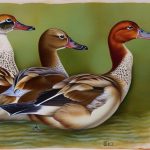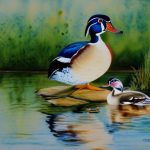Duck breeding is a fascinating process that involves several stages, each crucial to the successful reproduction and growth of ducklings. The breeding cycle begins with the mating and nesting behavior of ducks, followed by egg laying and incubation. Once the eggs hatch, the ducklings require careful care and attention to ensure their healthy development. As they grow, they go through various stages of growth and development before reaching adulthood. After the breeding season, ducks go through a molting and resting period before the cycle begins again. Understanding the intricacies of the duck breeding cycle is essential for duck breeders to ensure the health and well-being of their flock.
Duck breeding is a natural process that occurs in the wild as well as in domestic settings. Ducks are known for their monogamous mating behavior, where a male and female form a pair bond for the breeding season. The breeding cycle typically begins in the spring when the days are longer, and the weather is warmer. During this time, ducks exhibit specific mating behaviors, such as courtship displays and vocalizations, to attract a mate. Once a pair bond is formed, the ducks will engage in mating rituals, which can involve elaborate displays of affection and courtship dances. Understanding these behaviors is essential for duck breeders to recognize when their ducks are ready to breed and to provide them with the appropriate environment for successful mating.
Table of Contents
- 1 Mating and Nesting Behavior
- 2 Egg Laying and Incubation
- 3 Hatching and Duckling Care
- 4 Growth and Development of Ducklings
- 5 Molting and Resting Period
- 6 Conclusion and Tips for Duck Breeders
- 7 FAQs
- 7.1 What is the breeding cycle of ducks?
- 7.2 How do ducks choose a mate?
- 7.3 How long does it take for duck eggs to hatch?
- 7.4 What is the incubation period for duck eggs?
- 7.5 How many times a year do ducks breed?
- 7.6 What is the role of the male duck during the breeding cycle?
- 7.7 What happens after the ducklings hatch?
Key Takeaways
- Duck breeding cycle involves mating, nesting, egg laying, incubation, hatching, duckling care, growth and development, molting, and resting periods.
- Mating and nesting behavior in ducks includes courtship displays, pair bonding, and selection of nesting sites.
- Egg laying and incubation period lasts for about 28 days, during which the female duck will sit on the eggs to keep them warm.
- Hatching and duckling care involves the mother duck leading her ducklings to water and teaching them how to forage for food.
- Growth and development of ducklings includes rapid growth in the first few weeks and the development of feathers for swimming.
- Molting and resting period occurs annually, during which ducks shed and regrow their feathers, and take a break from breeding activities.
- Conclusion and tips for duck breeders include providing proper nutrition, housing, and predator protection for successful breeding and raising of ducks.
Mating and Nesting Behavior
Mating and nesting behavior are crucial aspects of the duck breeding cycle. Once a pair bond is formed, ducks will seek out a suitable nesting site to lay their eggs. In the wild, ducks often choose secluded areas near water bodies, such as marshes or ponds, to build their nests. In a domestic setting, breeders should provide nesting boxes or shelters filled with soft bedding material to encourage their ducks to lay eggs in a safe and comfortable environment. It is essential to provide nesting sites that are protected from predators and disturbances to ensure the safety of the eggs and ducklings.
After finding a suitable nesting site, female ducks will begin laying eggs, typically one egg per day until they have laid a full clutch. The number of eggs in a clutch can vary depending on the breed of duck, but it is essential for breeders to monitor their ducks’ egg-laying behavior to ensure that all eggs are accounted for. Once the clutch is complete, the female will begin incubating the eggs to keep them warm and facilitate embryonic development. During this time, the male duck may stand guard and protect the nesting site from potential threats. Understanding the nesting behavior of ducks is crucial for breeders to provide the necessary support and care for their ducks during this critical stage of the breeding cycle.
Egg Laying and Incubation
Egg laying and incubation are pivotal stages in the duck breeding cycle, as they mark the beginning of new life. Female ducks will lay their eggs in the nesting site they have chosen, typically one egg per day until they have laid a full clutch. The number of eggs in a clutch can vary depending on the breed of duck, with some laying as few as 8-12 eggs and others laying up to 16-20 eggs. It is essential for breeders to monitor their ducks’ egg-laying behavior to ensure that all eggs are accounted for and to provide proper care and protection for the developing embryos.
Once the clutch is complete, the female duck will begin incubating the eggs by sitting on them to keep them warm and facilitate embryonic development. The incubation period typically lasts around 28 days, during which time the female will diligently tend to her eggs, turning them regularly to ensure even heat distribution and humidity levels. It is crucial for breeders to provide a quiet and secure environment for their nesting ducks during this time to minimize disturbances and stress, which can negatively impact egg viability and hatch rates. Understanding the intricacies of egg laying and incubation is essential for duck breeders to support their ducks through this critical stage of the breeding cycle.
Hatching and Duckling Care
Hatching marks an exciting milestone in the duck breeding cycle as the eggs begin to hatch, and adorable ducklings emerge. The hatching process can take several hours or even days, as each duckling works its way out of its shell using its egg tooth—a small projection on its beak specifically designed for this purpose. Once hatched, ducklings are wet, tired, and vulnerable, so it is crucial for breeders to provide them with a warm and dry environment to recover from their ordeal.
Ducklings require careful care and attention in their early days to ensure their health and well-being. Breeders should provide them with access to clean water for drinking and swimming, as well as a balanced diet of commercial duckling feed or a homemade mixture of grains and protein sources. It is essential to monitor their growth and development closely, ensuring that they are growing at a healthy rate and addressing any health issues promptly. Additionally, providing ample space for exercise and social interaction is crucial for promoting strong muscles and social skills in young ducklings. Understanding the hatching process and providing proper care for ducklings is essential for duck breeders to ensure the successful growth and development of their flock.
Growth and Development of Ducklings
The growth and development of ducklings are rapid and fascinating processes that occur in the weeks following hatching. Ducklings grow quickly, doubling or even tripling in size within the first few weeks of life. During this time, they develop feathers, gain strength in their legs, and begin to explore their environment with curiosity and enthusiasm. Breeders should provide ample space for ducklings to exercise and play, as well as access to nutritious food and clean water to support their rapid growth.
As ducklings grow, they go through various developmental stages that prepare them for adulthood. They will begin to exhibit natural behaviors such as preening, swimming, and foraging for food as they become more independent. Breeders should observe their ducklings closely during this time, ensuring that they are growing at a healthy rate and addressing any health or behavioral issues promptly. Additionally, providing opportunities for social interaction with other ducklings or adult ducks can help young birds develop important social skills that will serve them well throughout their lives. Understanding the growth and development of ducklings is essential for duck breeders to provide them with the care and support they need to thrive.
Molting and Resting Period

After the breeding season comes to an end, ducks go through a molting and resting period as they prepare for the next cycle. Molting is a natural process in which ducks shed their old feathers and grow new ones—a vital renewal process that ensures healthy plumage for insulation and waterproofing. During this time, ducks may appear scruffy or disheveled as they lose their old feathers, but it is essential for breeders to provide them with proper nutrition and care to support healthy feather regrowth.
The molting period is also a time of rest for ducks as they recover from the demands of breeding and prepare for the upcoming winter months. Breeders should provide their ducks with ample space to rest and preen, as well as access to nutritious food to support their recovery. It is crucial for breeders to monitor their ducks’ health during this time, addressing any issues that may arise as they transition from one phase of the breeding cycle to the next. Understanding the molting and resting period is essential for duck breeders to support their flock through this natural process and ensure their health and well-being.
Conclusion and Tips for Duck Breeders
In conclusion, understanding the intricacies of the duck breeding cycle is essential for duck breeders to ensure the health and well-being of their flock. From mating and nesting behavior to egg laying, incubation, hatching, duckling care, growth and development, molting, and resting periods—each stage plays a crucial role in the successful reproduction and growth of ducks. By providing proper care, nutrition, and support at each stage of the breeding cycle, breeders can help their ducks thrive and lead healthy lives.
For duck breeders looking to enhance their knowledge and skills, here are some tips to consider:
1. Provide suitable nesting sites with soft bedding material for your ducks to lay their eggs in a safe environment.
2. Monitor your ducks’ egg-laying behavior closely to ensure all eggs are accounted for during incubation.
3. Create a warm and dry environment for newly hatched ducklings to recover from hatching.
4. Provide access to clean water, nutritious food, ample space for exercise, and social interaction for growing ducklings.
5. Support your ducks through the molting period by providing proper nutrition and care for healthy feather regrowth.
6. Monitor your ducks’ health during resting periods, addressing any issues that may arise as they transition between breeding cycles.
By following these tips and understanding the various stages of the duck breeding cycle, breeders can provide their ducks with the care and support they need to thrive throughout each phase of their lives.
If you’re interested in learning more about the breeding cycle of ducks, you might also want to check out this informative article on when duck mating season occurs. Understanding the natural mating behaviors and cycles of ducks can be essential for anyone looking to breed ducks or simply wanting to observe and appreciate their natural behaviors. For more insights into poultry care and breeding, visit PoultryWizard.com, where you can find a wealth of resources, including tips on building a functional A-frame chicken coop for your feathered friends.
FAQs
What is the breeding cycle of ducks?
Ducks typically breed in the spring and early summer, with the peak of breeding activity occurring between March and June.
How do ducks choose a mate?
Ducks often choose their mates through courtship displays, which can include vocalizations, head bobbing, and preening.
How long does it take for duck eggs to hatch?
Duck eggs typically take about 28 days to hatch, although this can vary slightly depending on the specific breed of duck.
What is the incubation period for duck eggs?
The incubation period for duck eggs is around 28 days, during which the female duck will diligently sit on the eggs to keep them warm and protected.
How many times a year do ducks breed?
Ducks typically breed once a year, although some species may breed more than once if conditions are favorable.
What is the role of the male duck during the breeding cycle?
The male duck plays a role in courtship and mating, and may also help protect the female and the nest during the breeding cycle.
What happens after the ducklings hatch?
After the ducklings hatch, the female duck will lead them to water, where they will begin to learn how to swim and forage for food. The male duck may also play a role in protecting and caring for the ducklings.
Meet Walter, the feathered-friend fanatic of Florida! Nestled in the sunshine state, Walter struts through life with his feathered companions, clucking his way to happiness. With a coop that’s fancier than a five-star hotel, he’s the Don Juan of the chicken world. When he’s not teaching his hens to do the cha-cha, you’ll find him in a heated debate with his prized rooster, Sir Clucks-a-Lot. Walter’s poultry passion is no yolk; he’s the sunny-side-up guy you never knew you needed in your flock of friends!







